Bringing The Future™ to the People: The affordable innovations of Sir Clive Sinclair
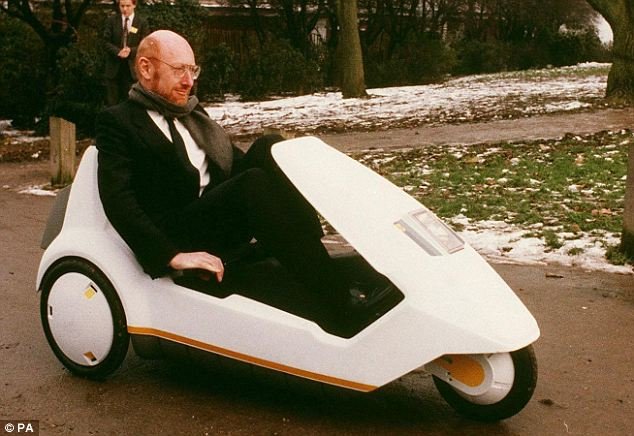
Sir Clive Sinclair is a man of many talents. A brilliant eccentric, and undoubtedly Britain's Elon Musk in a world where Sir Richard Branson doesn't exist. I'd argue that in many respects, Sir Clive's contributions had a more widespread impact on the world, especially in the 1980s, simply because more people could afford them.

His first and biggest success was the Spectrum line of personal computers. If it looks like a cheap toy it basically was, at least in terms of build quality. Thin flimsy body, rubber calculator style buttons...but it was a real home microcomputer, it output color graphics, and it cost £175. That was the equivalent of $573 in 2016 US dollars. That's roughly what a decent prebuilt PC costs today!

It connected to your television set, and loaded programs stored on cassette tapes into memory via an audio in port. The color palette was severely limited, the only sound it was capable of came from an integrated beeper (though later models incorporated 2 channel sound) and in all other ways it was a very stripped down, bare bones machine.

But regular people could afford it. That made all the difference, something Clive understood better than most. What good is The Future™ if it only arrives on time for the wealthy? Clive's mission was to bring that future to 1980s Britain at a cost anybody could afford. Soon that mission expanded in scope, from microcomputers...to personal electric vehicles.
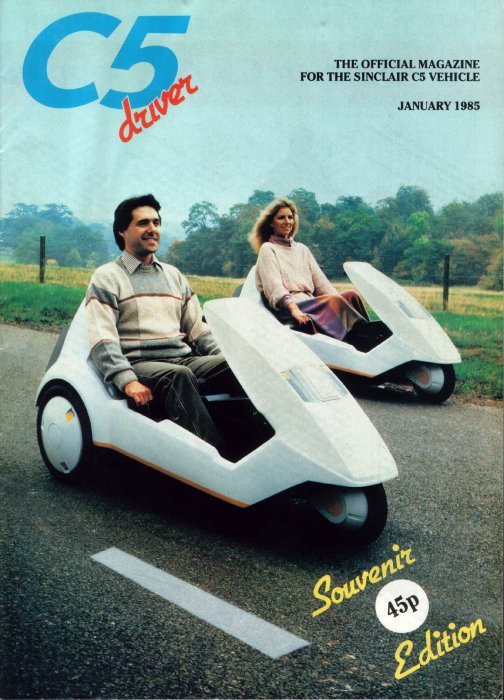
Enter the Sinclair C5. Propelled by a 250 watt motor capable of speeds around 12 mph on flat ground with no wind, supplied electricity by a 12 volt lead acid battery, the Sinclair was no sports car. The quoted range of 20 miles was actually closer to 18 when brand new and highly dependent on factors like the weight of the driver and whether you had to go up any hills.
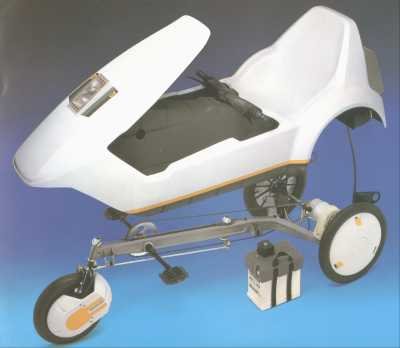
But it was an electric vehicle in 1985! Never mind that it was largely made of plastic. Never mind that the handlebars went under your knees. Never mind it couldn't handle steep slopes and was barely faster than walking. Electric vehicle! 1985! For just £399 no less, today's equivalent of $1,174.16. This made it a guaranteed success in Sir Clive's mind, so much so that he didn't even bother testing the C5 with focus groups.
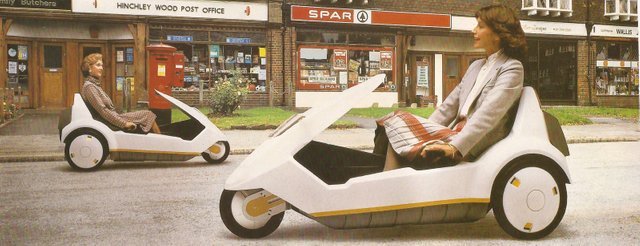
Its problems were perfectly predictable to common sense, every day human beings. But I recognize how Sir Clive's mind works as I've been guilty of the same reasoning myself, in which all that matters are the engineering and economic merits of a machine, and the human/social factors are irrelevant. Stuff like the danger of such a small, slow, fragile vehicle sharing the roads with cars for example.
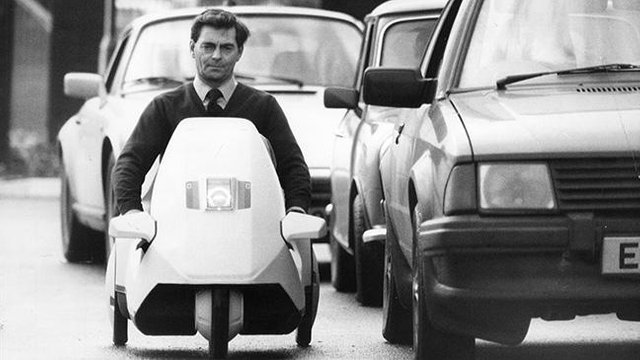
...Or what you do if it rains. The C5 was not terribly waterproofed and had a totally open "cockpit" which may have been fine for someplace like Arizona or California, but for rainy Britain it was a serious oversight. Addons like the rain cover were released late in the vehicle's lifespan, as well as a red flashing light on a pole you could mount to the rear to improve your visibility to cars, but trying to nestle something one step above an electric bicycle into the same transport ecosystem as full sized cars was fundamentally a poor idea.
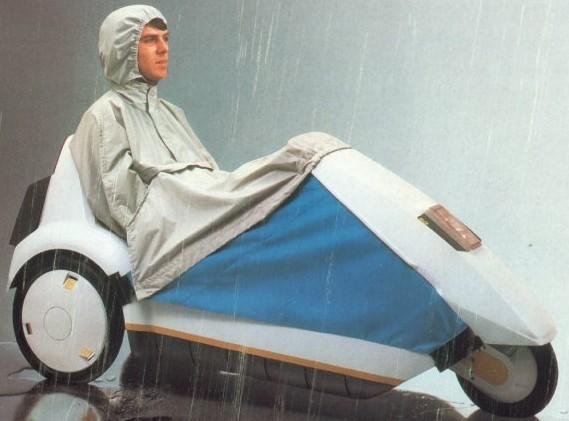
It pains me to say that too, as the C5 was and is a wonderful fantasy. Hopping into your little Jetsons pod, zipping to and fro in some hypothetical alternate universe where everybody else has a C5 too, so sharing the road with cars isn't a problem. Where the sun always shines, there's never a drop of unwanted rain and nobody yells out that you look like a massive tool scooting around in what is essentially a Power Wheels for adults.
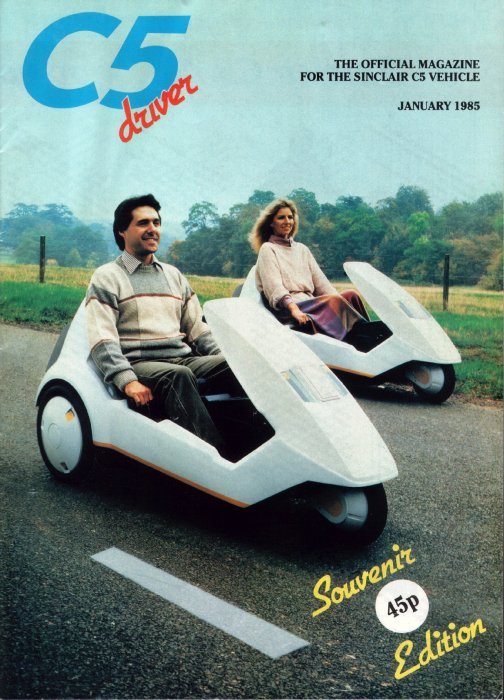
Despite the flop that was the C5, Sir Clive wasn't done with electric vehicles yet. In 1992 he put out one of the first electric bicycles (and a folding one at that!) the "Zike". Powered by Nickel Cadmium batteries (concealed in the frame) which were common in cordless power tools at the time, it could reach a top speed of 12mph just like the C5, and run for between 30 minutes and 3 hours depending on the power settings.
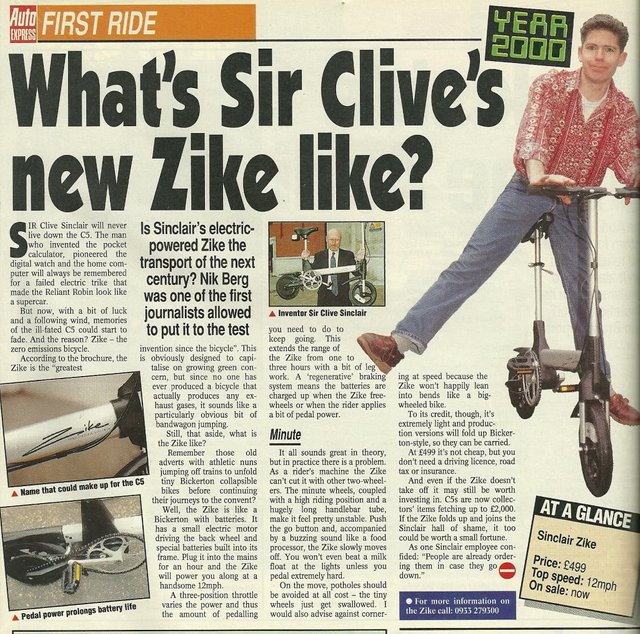
The 100 watt motor was simply too paltry for most however, the tiny wheels were unstable and prone to being engulfed by potholes, and for £499 ($1,126.79 in 2016 dollars) consumers expected a lot more than it could deliver. Despite two consecutive flops in the electric vehicle market, Sir Clive tried again in 2006 with the A-Bike. It's enjoyed somewhat more success as batteries became much better and cheaper between 1992 and 2006, solving most of the problems with the Zike.
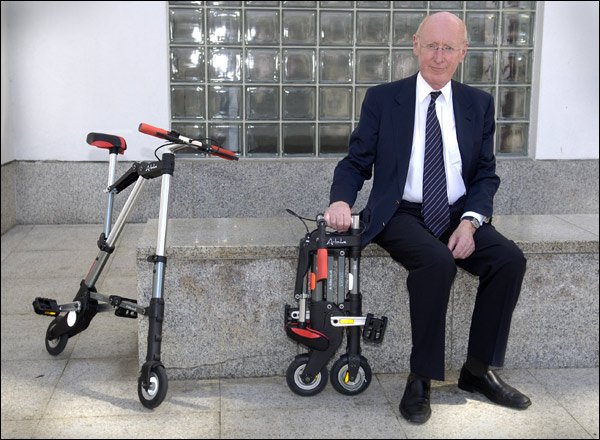
You can buy an A-bike today. It's still selling and doing decently well. Sir Clive had the right idea, just at the wrong time. Like countless other men of his calibre, he had one foot in the future at all times and could not help but try to bring the future to the people faster than the market would bear. He was nevertheless beloved for it, receiving a Knighthood in 1983 (hence "sir").
What hair remains on his head is grey, but he's still going strong. There's no telling what he'll unleash upon the world next, but if the past is any indication it will at least be profoundly interesting, and priced within reach of the common man.
I did my first programming on a Timex Sinclair 1000 which was the U.S. equivalent of the ZX80. :)
Shhh, there there. It's over now, everything is going to be ok.
Well if you liked it more power to you, but dem tiny rubber buttons man
That helped... you had me lost... thus the CONFUSED giphy. :)
I ditched it pretty quick and went to a Commodore 64. That is just where I started programming. I wanted to make a Zork game and always ran out of memory after one room on the Timex Sinclair 1000. :)
Awesome and interesting post! Thank you - we shared it as part of our best of steem edition https://steemit.com/bestofsteem/@steemzine/steemzine-the-best-of-steem-5
Rad. Feel free to feature my stuff in the future, I post this sort of thing every day starting around noon pst.
I remember the Zike, the C5 and even the old rubber keyed ZX spectrum from my childhood.
You had a cool childhood then.
It's a bit of a moral-uplift story!
That's the risk of being an early visionary-inventor: you end up too ahead of your time and end up spinning your wheels (sorry.) It takes a lot of perseverance and persistence to see through the hard years when lots of folks think you're a bit of a nut.